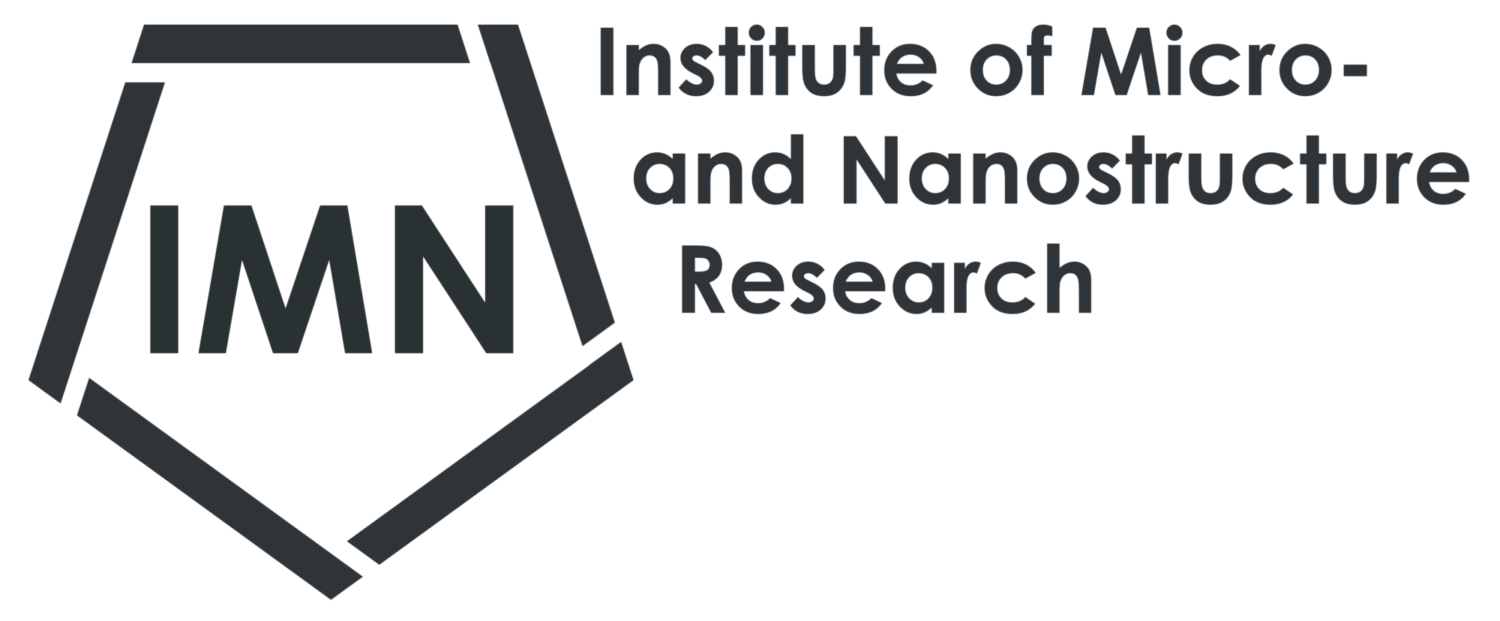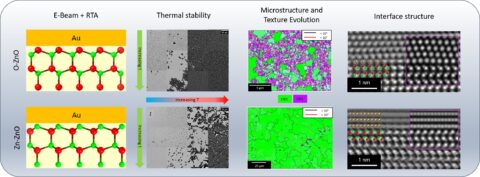Correlative electron microscopy, X-ray diffraction and DFT reveal the influence of substrate polarity on metal thin film growth characteristics
IMN/CENEM researchers recently published their study on the “Influence of substrate polarity on thermal stability, grain growth and atomic interface structure of Au thin films on ZnO surfaces” in Acta Materialia (https://doi.org/10.1016/j.actamat.2024.120531). The work was carried out in close collaboration with the Institute of Crystallography and Structural Physics (ICSP)/CENEM, the Interdisciplinary Center for Molecular Materials (ICMM) and the Computer Chemistry Center (CCC) at FAU Erlangen-Nuremberg.
The properties of metal-oxide (Me-O) interfaces are of interest for a number of diverse applications. The thin films’ stability and functionality highly depend on the metallic film’s microstructure and the metal-oxide interface.
In the present study, Martin Dierner et al. investigate the influence of the ZnO substrate polarity (O- and Zn-termination) on the microstructure and texture evolution of thin Au films. They shed light on the thermal stability, texture development, and the atomic interface structure by combining X-ray diffraction, electron microscopy, and DFT calculations. Key aspects include:
- a higher thin film instability on O-ZnO, which is discussed in terms of a reduced adhesion strength of Au on O-ZnO at elevated temperatures as revealed by DFT calculations
- the co-existence of two orientational relationships (OR 1 and 2) at room temperatures, which switches to an OR 1 dominated microstructure on Zn-ZnO via abnormal grain growth at 800 °C
- atomically sharp interfaces between Au(111) and ideal bulk-truncated O- and Zn-terminated ZnO surfaces as most stable configurations.
In addition, DFT gives insight into the preferred binding of Au on the different terminations: whereas it partially covalently binds to O with preferred on-top positions, trying to extend the ZnO structure, it favors hollow positions on the Zn-terminated surface like in a metallic structure. Further, the nature of the interface, semi-coherent or incoherent, is revealed as function of the OR.
Congratulations to Martin and colleagues for the great work!

